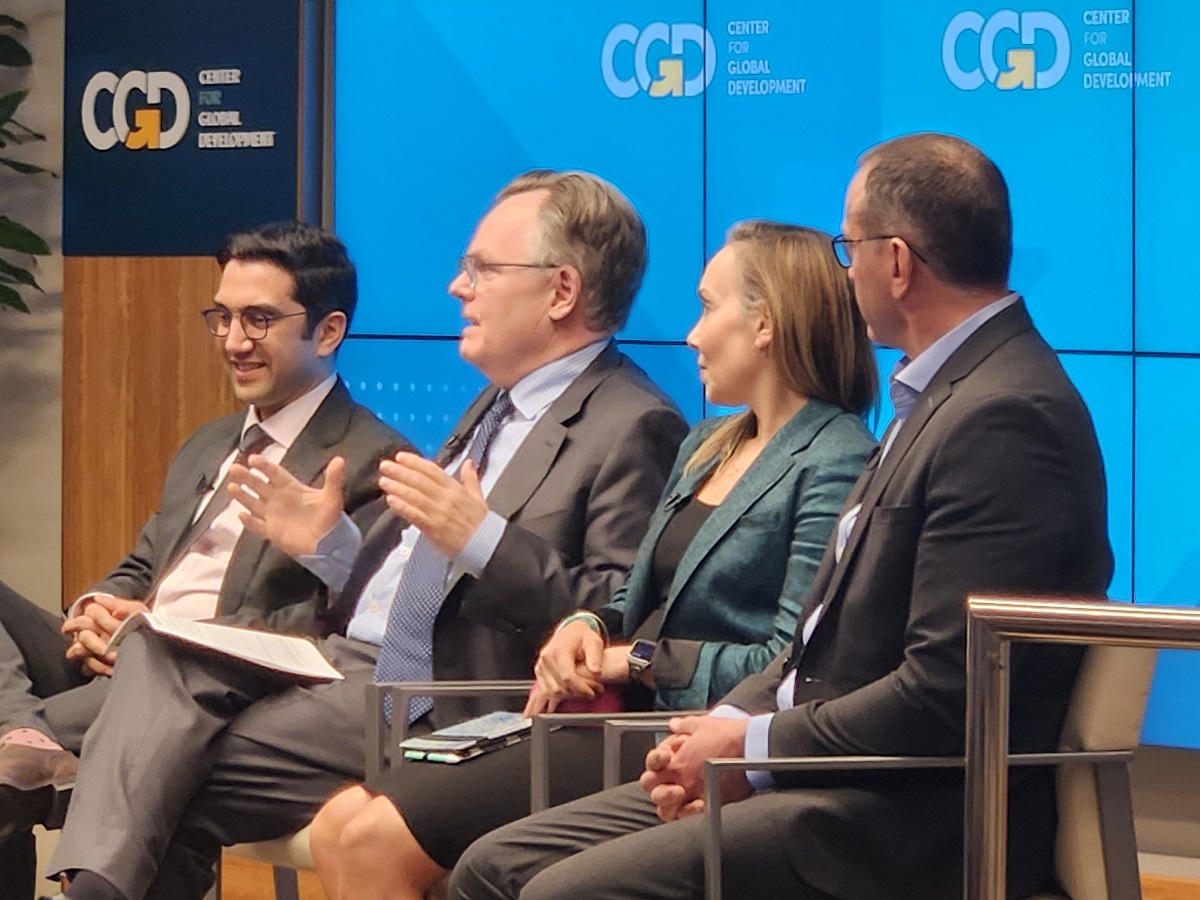When it comes to measuring development impacts, nothing beats forests. With ever-improving satellite monitoring technology, measuring global forest cover is each year easier, cheaper, and more accurate. Which means that—whatever you want to call it (pay for performance, results-based aid)—rewarding tropical forest countries for preserving their forests, and for their climate and development benefits, is becoming easier and more accurate.
But until now a large-scale, simple program to reward tropical forest countries for their performance, based on satellite data like the Forest Conservation Performance Rating, has not been established. Why?
One of the primary reasons: not enough money. Most results-based payments to reward reduced deforestation come from aid money, official development assistance (ODA). But there are dozens of competing high priority uses for ODA. And when ODA funds are used for rewards payments, donors are tempted to treat results programs like donor assistance and attach conditions to how the results are achieved and how the reward payments are utilized, or to “aidify” the results-based payment program.
But what if there was a huge endowment or sovereign wealth fund whose investment returns could be used to pay tropical forest countries for their results in reducing deforestation?
That is the thinking behind a new CGD financing scheme—the Tropical Forest Finance Facility. In 2014 Ken Lay, the former Treasurer and VP of the World Bank, came to CGD with an idea to raise substantial funding for a forest performance payments system. With generous assistance from the Rockefeller Foundation and from Norwegian Norad, a CGD-based team fleshed out the idea and consulted with finance, development, climate and forest experts in more than a dozen forest and donor countries. These ideas are now set out in a series of CGD policy and working papers.
What is the new idea?
The basic idea is simple but novel: the Tropical Forest Finance Facility (TFFF) would create a pay-for-performance financing mechanism that would operate like an endowment or multilateral sovereign wealth fund; the net returns on the investment of the TFFF’s capital would be awarded to tropical forest countries based on measured results in protecting their natural forests. Rather than competing for scarce donor funding, the TFFF would be capitalized by low-cost loans. Once the capital is raised, investments would be managed by a team of professional asset management experts and performance assessment would be overseen by forest experts.
To capitalize the TFFF, contributions would not come from ODA or other government budgets. Rather, investor countries, philanthropies, or private investors would provide loans or draw on endowments or reserve funds to capitalize the TFFF. We propose an initial target size of $100 billion for the TFFF.
The low-cost funds used to capitalize the TFFF would be invested over a long-time horizon in a diversified, endowment-like portfolio of relatively riskier assets with higher expected returns, like the portfolios of major universities, endowments, and foundations. Investors would be paid debt service on their loans annually from the fund’s returns and would redeem their initial capital when the fund is unwound after 20 years
The returns on the fund, after paying costs, would accrue to tropical forest countries that successfully protect their forest resources. Based on historic returns, a fund of $100 billion could generate approximately $5 billion a year in potential performance awards—a significant incentive even for large forest countries.
Success in maintaining tropical forests would be assessed as simply as possible, primarily through breakthrough technology in annual satellite monitoring, and would be transparent, public, and independently verified. Performance would be assessed based on a combination of (1) a country’s performance in maintaining forests or reducing deforestation against a benchmark, and (2) its share of global tropical forests. The TFFF’s governance would be modeled on the governance of sovereign wealth funds and not on international climate funds such as the Green Climate Fund or the Climate Investment funds.
Why forests?
Tropical forests contribute to more than 10 of the Sustainable Development Goals (SDGs.) As a recent CGD book Why Forests? Why Now? explains, forests provide incomes to rural communities, protect watersheds, capture and store carbon from the atmosphere, and increase resilience to extreme weather events.
Deforestation in many developing countries has been increasing, the result of seemingly compelling economic incentives—at least for those controlling land. A significant incentive to take the difficult steps necessary to end deforestation is needed. The idea of results-based payments to protect forests is enshrined in the 2015 UNFCCC Paris Agreement, which lays out the parameters for Reducing Emissions from Deforestation and Forest Degradation, or REDD+.
Forests lend themselves to a pay-for-performance funding approach because recent advances in satellite monitoring technology make the measurement of results—maintaining natural forests or reducing deforestation against a benchmark—relatively straightforward, transparent, and consistent.
We are pleased that the World Bank is exploring the possibility to take the TFFF ideas forward. This is similar to the process that brought the idea of an Advanced Market Commitment, nurtured at CGD in this 2005 report, from endorsement by the G7 summit in L’Aquila, Abruzzo, Italy, to implementation by the World Bank, eventually leading to the production and distribution of the pneumococcal vaccine that saved millions of children’s lives in developing countries.
The idea is bigger than forests
The TFFF funding model could be attractive in other sectors and to a wider group of investors, such as impact investors or philanthropic foundations, many of whom are looking to link their endowment investments to their broader mission. These kinds of organizations could provide extremely low-cost loans from their sizeable endowments.
The TFFF model is an interesting new financing mechanism. If it works, it could make possible a new approach to mobilizing international financing to conserve forests, and perhaps eventually to support the SDGs and other global public goods.
Disclaimer
CGD blog posts reflect the views of the authors, drawing on prior research and experience in their areas of expertise. CGD is a nonpartisan, independent organization and does not take institutional positions.





